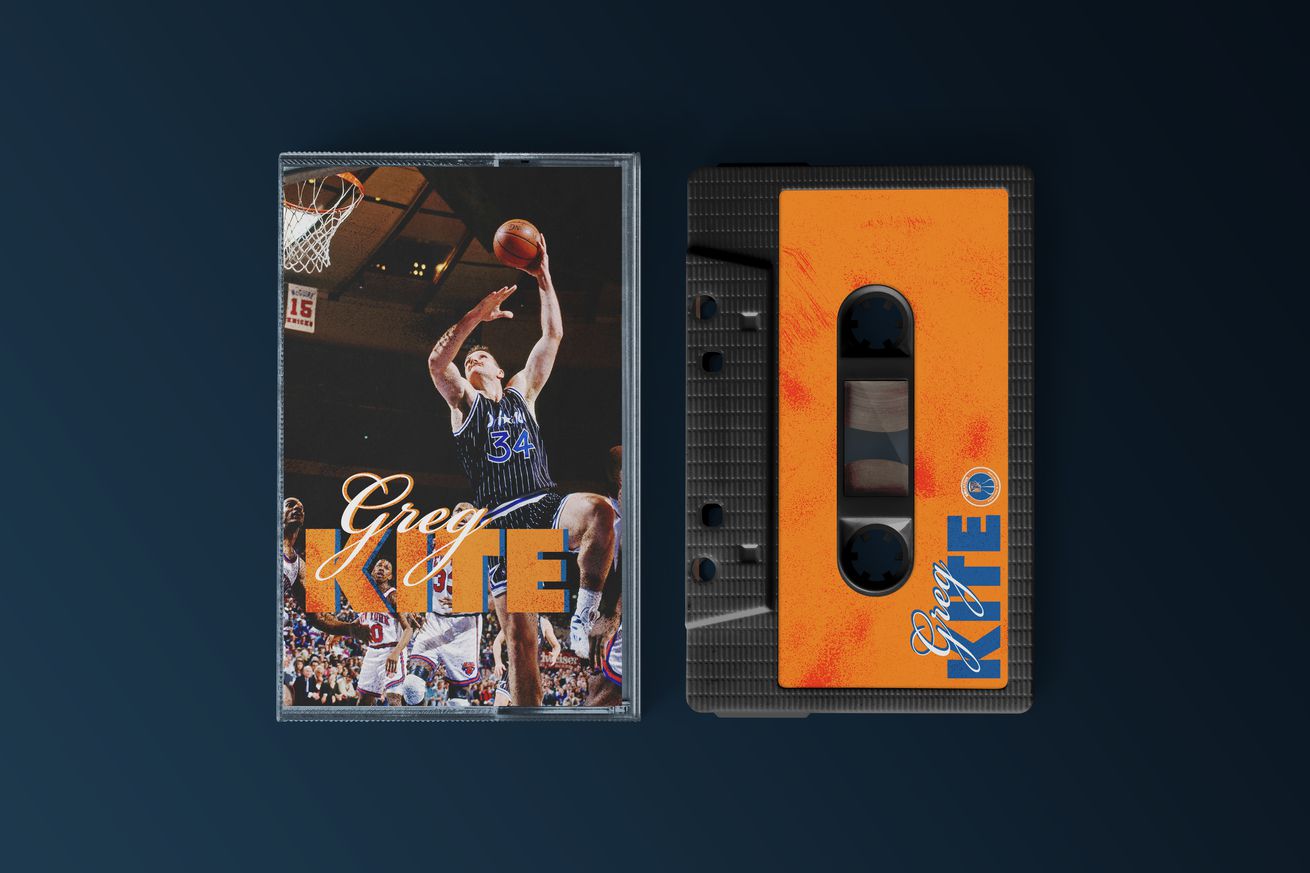
Talkin’ hoops, championships, and investing wisely for your future!
Former New York Knicks center Greg Kite enjoyed the kind of NBA career that aspiring professional basketball players can only dream of.
A first-round draft pick? Check. Win multiple championships, including one as a rookie? Check. Playing alongside future Hall of Famers? Check. Have a career that spans longer than a decade? Add another impressive check to the list.
Now, before the comments fill up with “Kite was hardly a Knick” or “Kite was with the team for all of two months and only played two games,” I’m going to kill that right now: As the Knicks mantra goes, “Once A Knick, Always A Knick.”
In 1979, Kite was a McDonald’s All-American before stepping on the court to play four seasons at Brigham Young University. He entered the 1983 NBA Draft and was selected 21st overall by the Boston Celtics. Unlike many rookies who find themselves alongside fellow newcomers, Kite stepped into a gym filled with NBA legends—Larry Bird, Kevin McHale, and Robert Parish. Not a bad trio of mentors for a 22-year-old rookie.
“The first thing that I learned was he was really good,” Kite told P&T, while laughing about his first encounter with Larry Legend. “He was great, I knew that before I went there, obviously he was already in the NBA and I saw him play a little bit in college.
“I learned early that Larry was a hard worker like I was, and he was a great teammate, a good guy with a lot of common sense, and he appreciated other players who were that as well. Guys who worked hard, were all about winning, and were good teammates.”
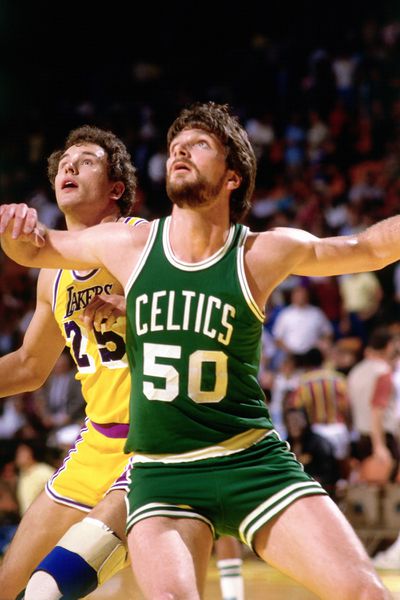
Photo by Andrew D. Bernstein/NBAE via Getty Images
While Kite was learning how to be the best teammate he could be from Bird, he was also learning how to develop his post-game from Kevin McHale.
“We did a lot of work on post moves,” Kite said. “I was often defending him (in practice); it was great playing with Kevin. He was a lot of fun, a lot of energy, a great personality, and an incredible player. Some people forget about him as one of the best of all time. He had it going!”
Greg Kite’s true “welcome to the NBA” moment mirrored a story once shared by Rory Sparrow with P&T about sharing the court with Dr. J for the very first time.
“We were playing in Philly and the game started at 7:30 so teams come out for warm-ups about 7, but around 6:45 players go out for their own stretching, and shoot, and I’m out there and Julius comes out and he walks by me and says, “Hi Greg!” and I’m like, he knows my name!?” Kite laughs. “He was a great guy, a nice guy, obviously he read the scouting reports, I don’t know if he read much on me but that was kind of the thing.”
Kite also reminisced on being young a rookie amongst legends.
“During training camp, my first training camp with the Celtics, it was just the normal Circadian Rhythm the normal basketball rhythm that this is the time of year you’re practicing, and basketball season is starting,” Kite said. “But then I’d take a step back after practice or at home sometimes, and go, wow I’m out here with Parrish, Bird, and McHale and in the NBA.”
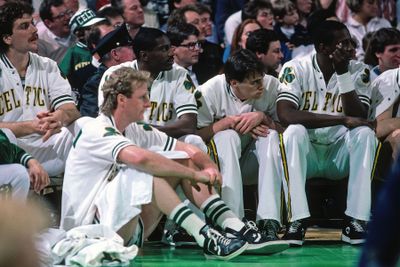
Photo by Dick Raphael/NBAE via Getty Images
Getting beyond the awe of being star-struck over sharing a locker room with future Hall-of-Famers is one thing. For a young rookie who was accustomed to shortened HS and NCAA schedules, adjusting to the new NBA grind is a whole different challenge, and one for the rookie that was a bit of a learning curve for Kite.
“Going into an 82-game season, with a championship team…” Kite said, “It’s another 20 games in the playoffs, plus the 8 exhibition games, it’s a lot of games and the body has to adjust to that.”
During Kite’s rookie year of 1983-84, the Celtics finished with an impressive 62-20 record and would ultimately go on to win the NBA championship by defeating the Los Angeles Lakers in a hard-fought seven-game series. However, that wasn’t their first seven-game battle during the Spring of ’84.
During the 1984 Eastern Conference Semifinals, the Celtics had another epic and historic seven-game battle with Bernard King and the New York Knicks.
“We could have easily been knocked out in that series,” Kite recalled. “It was a back-and-forth series, and there was high energy in both Gardens, Madison Square and the Boston Garden, and of course that was one of those parts of Bernard’s career where he was just on a tear.
“It was that year that Bernard averaged like 45 points a game against the Pistons in their series. He’s really one of the best scorers I have ever seen in the game. He was really at his peak right then, and then they had other guys like Rory Sparrow, and Marvin Webster. They had an excellent team.
“Hubie Brown was the coach. One of the greatest coaches of all time. So, it was a challenge. It was a battle beating the Knicks. We could have easily lost one of those games and then changed a lot of NBA history, but it was a great series.”
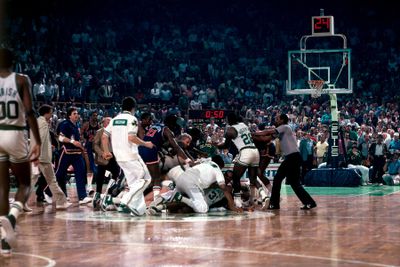
Photo by Dick Raphael/NBAE via Getty Images
The Celtics, with Kite as part of the team, made an extraordinary mark in NBA history by reaching four consecutive Finals appearances—an achievement that only four other teams have matched to date.
“I was with the Celtics for four NBA Finals in a row,” Kite recounted. “In the even years, we won, and in the odd years we lost. So the ‘84 and ‘86 championships we had beaten the Lakers (in 1984), and the Rockets in ’86, and then ‘85 and ‘87 we lost to the Lakers in those years in the Finals.
“The run of consecutive NBA Finals appearances by the Celtics wouldn’t happen again for nearly three decades until the Miami Heat made their fourth consecutive trip to the Finals in 2014. I didn’t realize until later—until the Heat did it with Bosh, Wade, and LeBron—that we were only the second team to go to found NBA Finals in a row.
“The Heat did it, then the Warriors passed it with five. That was quite an accomplishment to do that and be a part of it. The ‘86 championship team was phenomenal, probably one of the best teams in NBA history.”
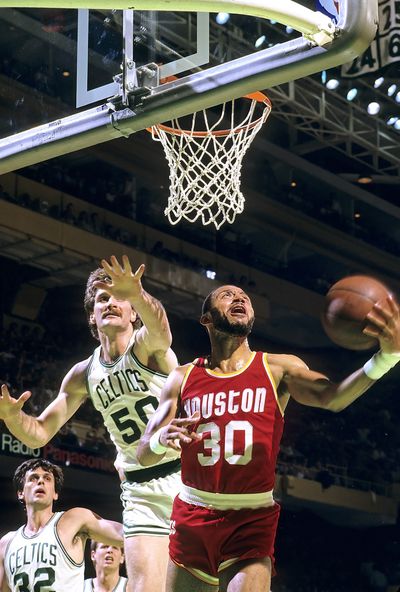
All NBA players, regardless of their position on the roster, have a defined role and the responsibilities that come with it. Whether it’s the star player averaging 40+ minutes a night, or a 12th man on the bench who plays seldomly—if at all—on any given night, each player contributes to the team’s overall success. At some point in their career, nearly all players are asked to step outside their usual role and take on greater responsibility. Such was the case in Game 3 of the 1987 Finals against the Lakers when Robert Parish was relegated to the bench due to getting himself into early foul trouble.
Throughout the Celtics’ four-year Finals run, Kite’s playing time was limited to just 6.2 minutes per game over a span of 53 playoff appearances. With Parrish in foul trouble, Celtics head coach K.C. Jones looked to Kite to step up in a big way, and he delivered one of the best defensive performances of his career against Kareem Abdul-Jabbar with 9 rebounds, 2 assists, and 1 block in 22 minutes of play.
Although Kite hadn’t scored a point, his defensive presence on the court was the key to the Celtics 109-103 victory, and it even caught the attention of Lakers Head Coach Pat Riley when during his post-game conference with reporters when he was famously quoted saying “Kite didn’t score a point? It looked like he had 100.”
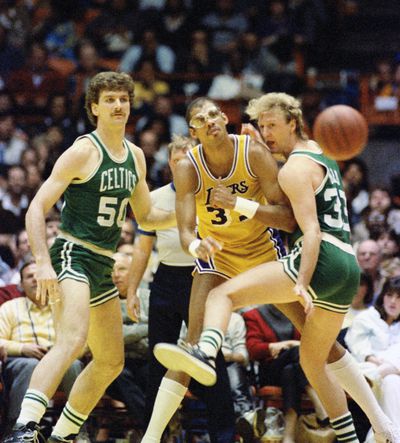
Photo by Bob Riha, Jr./Getty Images
Kite remembers everything fondly from that pivotal Game 3 with the Celtics already trailing the Lakers by two games and down 0-2 in the title-clinching series.
“It was a great memory,” Kite said. “We won the game, so that made it even better, but we lost the series so that was the big down part of it.
“That was my fourth year. One thing I did okay—or at least did pretty well—was playing defense in the post and getting some rebounds and running the floor. I wasn’t much of a scorer.”
Kite further elaborated on what his game plan was once he heard his number called upon that night in Boston.
“Particularly when I guard the post against a great scorer like Kareem, and a great passer you had to pick your poison,” Kite said. “A lot of people and coaches would double team a good scorer in the post, but when I played defense, they rarely did that. Not because I was super long or a phenomenal shot blocker, but just because I got good position, and I used my body to hold guys out a little bit.”
Filling a significant void during the regular season is one thing; being asked to do it during the NBA Finals, in front of a national audience, and against your childhood hero, is another entirely.
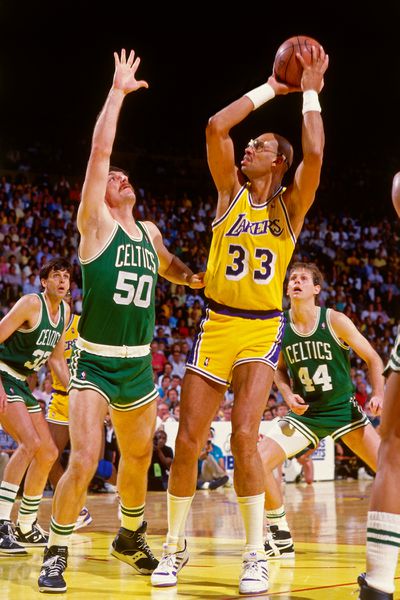
Photo by Andrew D. Bernstein/NBAE via Getty Images
“Kareem was one of my basketball heroes growing up,” Kite said. “He was still in his late thirties back then but he was still highly effective and was a cornerstone of the offense for the Lakers. That season was the second season that Bill Walton had been with us, but he was hurt most of that second season.
“Robert got into some foul trouble, and I was rolling and going okay, so K.C. Jones had the confidence to leave me out there a little bit longer. I had played a lot of spot minutes here and there against Kareem in previous series and previous years of games, and some other centers too that I could do a decent job of defending. But in that game, I kind of became the game hero.” Kite jokingly said. “I think it was ‘Go Fly a Kite Day’ or something like that the next day in Boston.”
When Kite later heard of Riley’s post-game comments, he took it as a major compliment.
“That was definitely a compliment. I think I had three misses under the basket, that’s how awful I was,” Kite laughed. “But I was able to hustle and grab those 9 rebounds and a block. The only thing different between now and then, if I was a center nowadays, I would have had three 3-pointers that I would have shot.”
Stay tuned for Part 2 of our interview with two-time NBA Champion Greg Kite, where he reflects on his playing days alongside Shaquille O’Neal, his experience playing under legendary coach Pat Riley, and his transition from professional basketball to a career in finance. Meanwhile, make sure to check the full archive of past P&T Interviews.
